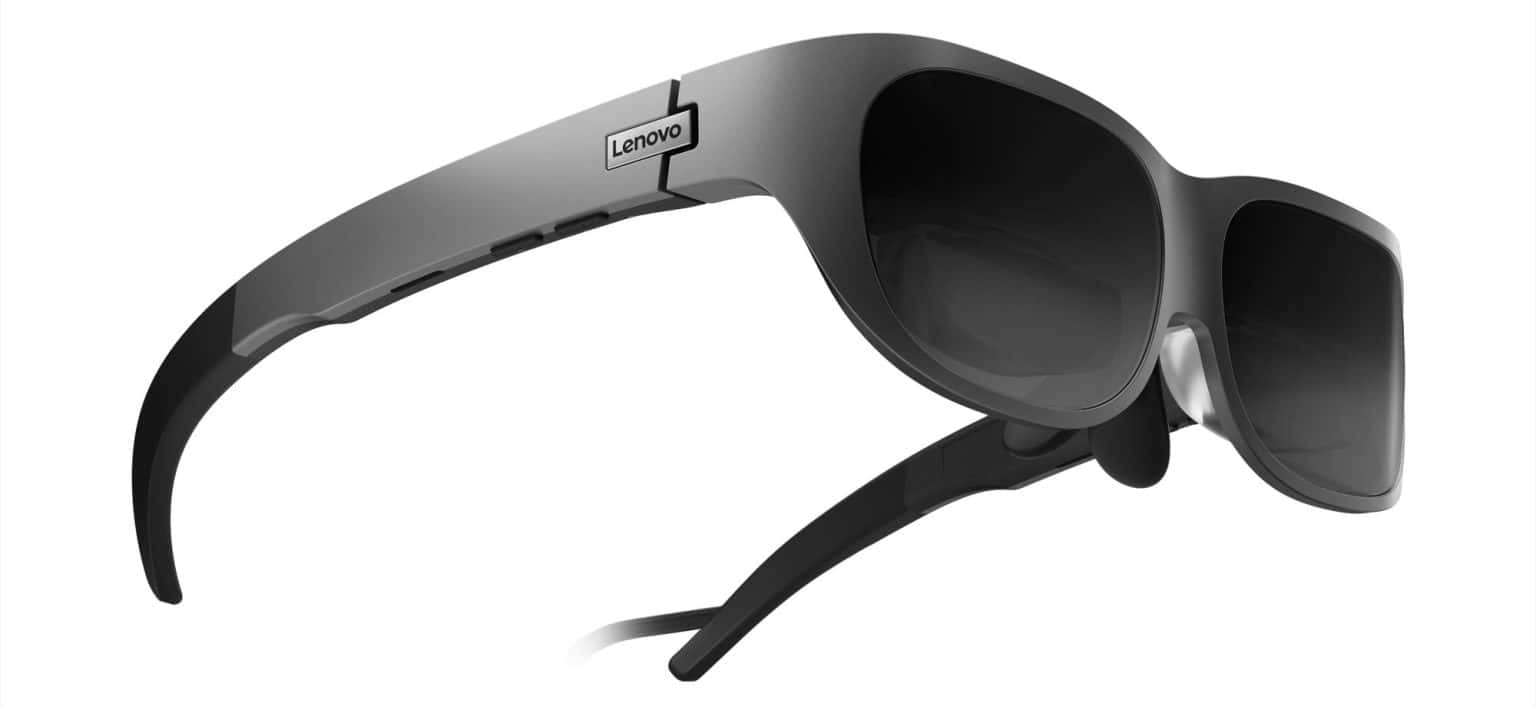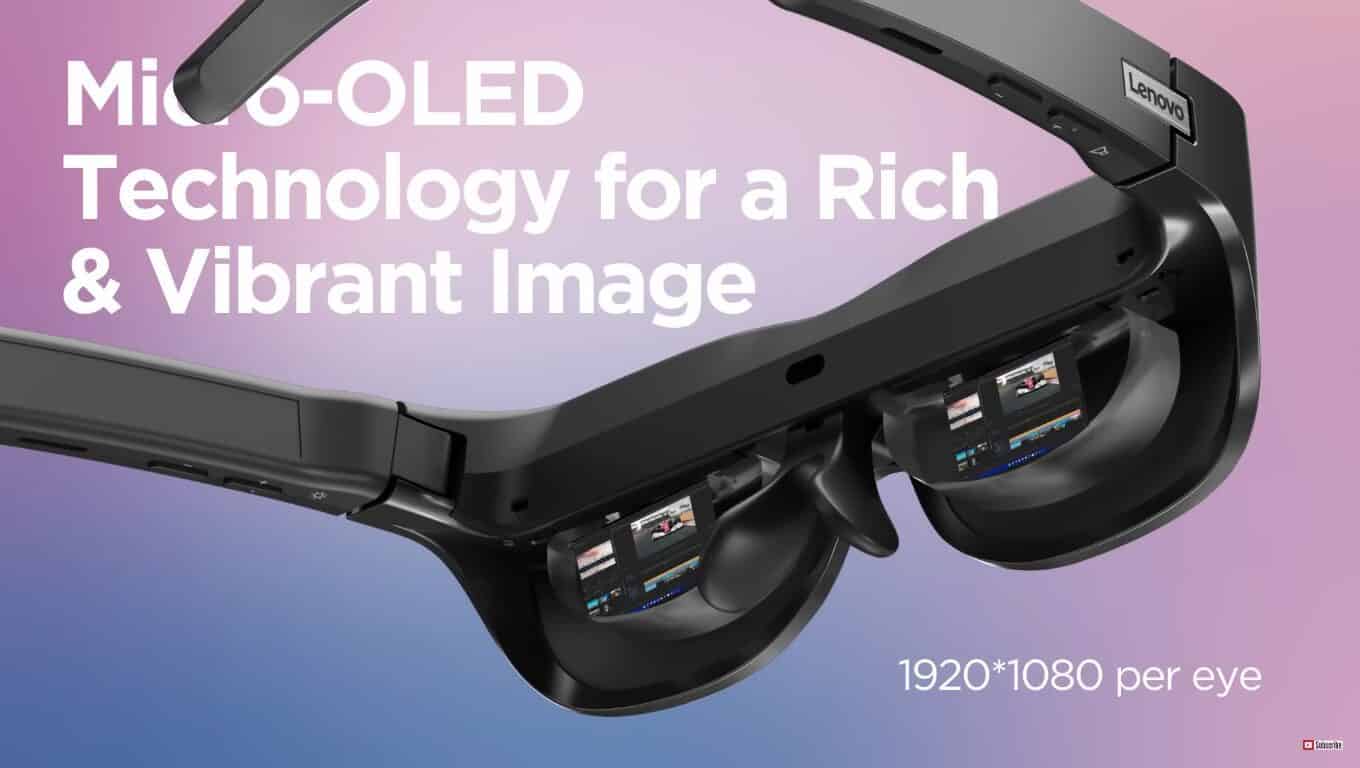Lenovo T1 Glasses: A consumer-focused wearable device with a specific purpose
5 min. read
Published on
Read our disclosure page to find out how can you help MSPoweruser sustain the editorial team Read more

Lenovo gave us a tour of its latest products in its Tech Life ’22 Virtual Showcase, where the Lenovo T1 Glasses caught our attention. The new device was also present at the IFA event last week, and participants were given a chance to catch a glimpse of the wearable device. At first glance, it appears like a regular pair of shaded sunglasses, but it is more than that. As Lenovo describes it, T1 glasses promise a “wearable private display for on-the-go content consumption,” basically making it a portable viewing screen for all types of users.

Lenovo T1 Glasses are not the first wearable technology in the form of eyeglasses. We already have the Razer Anzu, Ray-Ban Stories, Nreal Air, TCL NxtWear Air, and the flopped Snapchat Spectacles. Lenovo also previously released more advanced smart glasses like the chunky augmented reality head-mounted Lenovo ThinkReality A6 Smart Glasses and the $1,499 ThinkReality A3 Smart Glasses. Lenovo T1 Glasses has the same concept as the latter, allowing you to have a secondary screen or virtual display placed right in front of your eyes when you wear it. However, T1 Glasses are geared toward the general population of consumers, unlike ThinkReality A3, which was originally dedicated to professionals. T1 Glasses are stripped of the actual VR or AR features present in other wearable glasses, but it still has something to brag about, especially in terms of a lower price, which is anticipated by many.
Aside from that, the Lenovo T1 Glasses is marketed for the practicality it offers. Unlike ThinkReality A3, T1 Glasses has a lighter body due to the absence of sensors and other hardware. This makes it a bit more comfortable in terms of weight. It also has swappable nose pads, adjustable temple arms, and an attachable frame for holding custom prescription lenses. And to prevent eye fatigue and promote hour-long wearability, T1 Glasses are TUV Low Blue Light- and TUV Flicker Reduced-certified. However, note that it is not like other smart glasses on the market. You can’t wear it while walking around since it is supposed to be attached to a device, and the glasses themselves are designed to project a mini-display and not the environment in front of you.
The device complements a wide variety of devices, which is something we all love about it. Thanks to its USB-C connectivity, it can work well on many Android, Windows, and macOS devices. Additionally, Lenovo targets iOS users by allowing it to work on their Lightning Connector-equipped devices through an optional adapter. There’s also an option for those fans of Motorola’s “Ready For” interface, allowing the apps to work in desktop mode. Once connected, the device the glasses are attached to will let you navigate the apps and view them on display within the glasses. You also can make the screen move with your head or lock it in one place so you can look away from it if you want to.
The T1 Glasses have a 1920 X 1080 resolution for each eye and use a micro-OLED display technology with a contrast ratio of 10,000:1, which means despite the display size, you can view images with excellent details. The refresh rate comes at 60Hz, and although it is not the same as what other smart glasses have (e.g., Nreal Air has 90Hz), it should make the cut for general purposes from viewing documents to playing games.
It also has a pair of high-fidelity built-in speakers coupled with control buttons, making it an instant viewing device for personal clips and other NSFW videos. The wearable will rely on the power of the other device it is attached to, so weighing on its power usage is still impossible, though Lenovo said T1 glasses have “low overall power consumption.”
Lenovo is presenting the T1 Glasses as a practical device for viewing sensitive documents and files, as they will directly create a virtual display when you wear them. It makes the glasses incredibly useful for business travelers with habits of working while on trains or dining inside a cafe or using their laptops or mobile phones in public spaces. Nonetheless, with the growing gaming and video streaming market, the brand also hopes that the new product will knock on the interest of other casual users.
“With mobile devices growing in computing power, mobile gamers, road warriors and just about everyone else will benefit from the power of carrying a personal monitor in their pocket,” Lenovo said. “The trend is clear, mobile device users want to be able to play more games and stream more video. The global market for mobile gaming is projected to reach US$153 billion by 2027, growing at an annual growth rate of 11.5%, while the market for video streaming is forecasted to reach US$972 billion by 2030, growing 18.1% on average annually.”
The Lenovo T1 Glasses are expected to be available in China by the end of the year and then to select markets in 2023. Although the price of the glasses is still unveiled, a lot of reports and Lenovo’s intention to make it consumer-friendly give us a hunch it would be more affordable than the previous smartglasses introduced by the company. And while it is not as advanced as the other smart glasses on the market, its compact size, anticipated cheaper price tag, and direct practical purpose could make the Lenovo T1 Glasses a welcome product for many these days.








User forum
0 messages